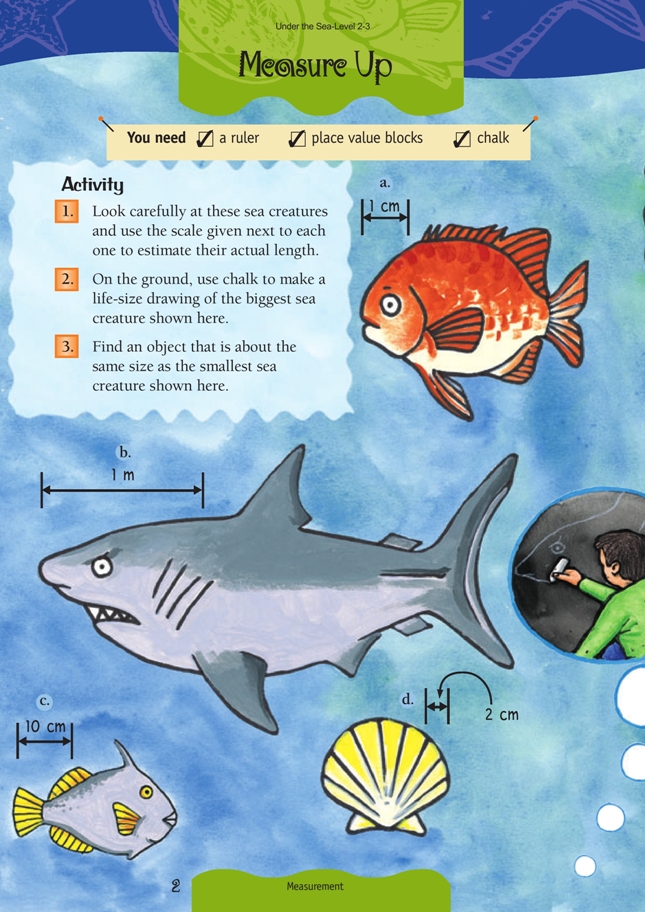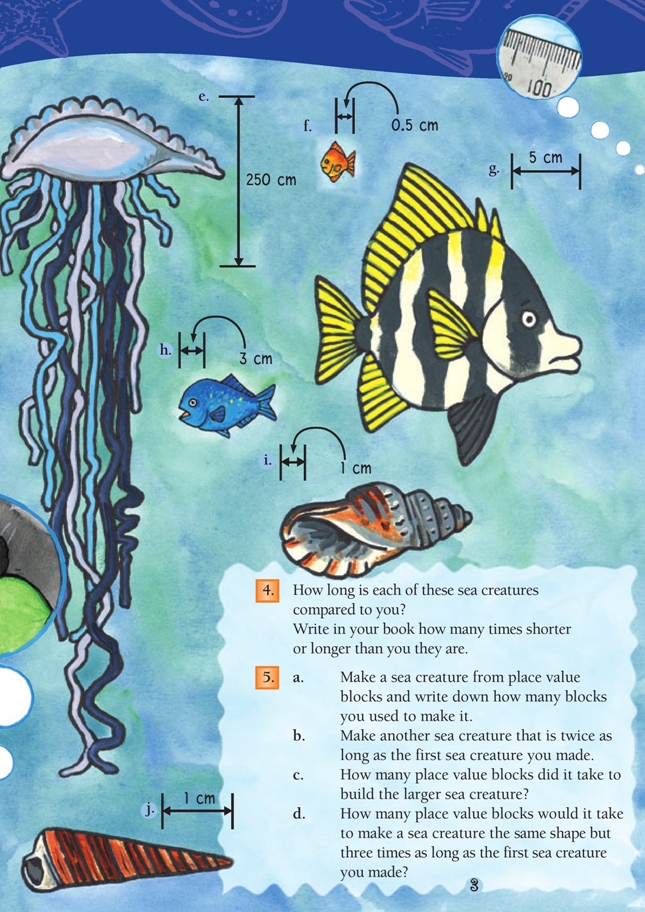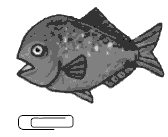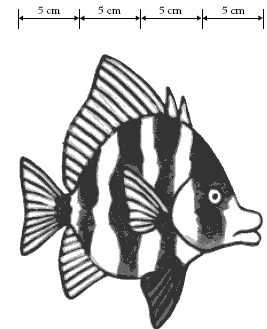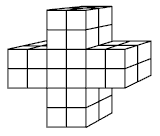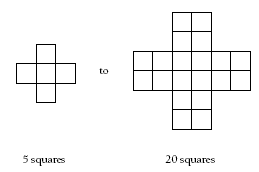This is a level 3 measurement and transformation activity from the Figure It Out theme series.
A PDF of the student activity is included.
Click on the image to enlarge it. Click again to close. Download PDF (556 KB)
estimate and measure lengths using rulers
compare lengths using estimation and multiplication
explore the relationship between length and area under enlargement (Q5)
A ruler
FIO, Level 2-3, Theme: Under the Sea, Measure Up, pages 2-3
Chalk
The use of scale is a difficult concept, but it is very helpful for drawing objects that are very large or very small. Students will understand the idea of looking at a creature through a magnifying glass to make it seem bigger or through a camera lens to make it look smaller. As a starter to the discussion, make an enlarged photocopy of a fish with a paper clip next to it.
Ask, “How long is this fish, really?”
Students may say that they know the length of a paper clip and can work it out from there. This illustrates the need for scale to interpret the real size of things depicted in drawings.
It is wise to work through the example of one creature with the students before they attempt the page independently. Consider the striped fish on the top right. Students will need to use the given scale as a unit.
So this fish will be 4 x 5 = 20 centimetres long.
The comparison of size brings out a number of interesting points. Students may consider that when a fish is doubled in length, it is twice its former size. In reality, this has a much greater effect on both the creature’s area (in two dimensions) and its volume (in three dimensions). The Junior Journal 11 (1994) article “How Do You Measure a Dinosaur?”, published by Learning Media for the Ministry of Education, may be a useful resource for question 2.
Question 5 is designed to reinforce that point. Consider a student who makes this starfish from multilink cubes:
Doubled in size in all its dimensions (lengths), it becomes:
If the two-dimensional area is considered, the change is from:
Although the length of each side is doubled, the area increases by 2 x 2.
When all three dimensions are considered, the number of cubes used increases from 5 to 40, so volume increases by 2 x 2 x 2, or eight times, when the length is doubled. This has implications for the mass of sea creatures as well. A fish that is twice the length of a similar fish is likely to have a mass eight times greater than the other fish.
Answers to Activity
1. Estimates: a. 5 cm b. 3 m
c. 30 cm d. 12 cm e. 1000 cm
f. 1 cm g. 20 cm h. 12 cm
i. 8 cm j. 3 cm
2. Teacher to check
3. Answers will vary.
4. Answers will vary. Teacher will need to check that the answers are realistic.
5. Answers will vary.
